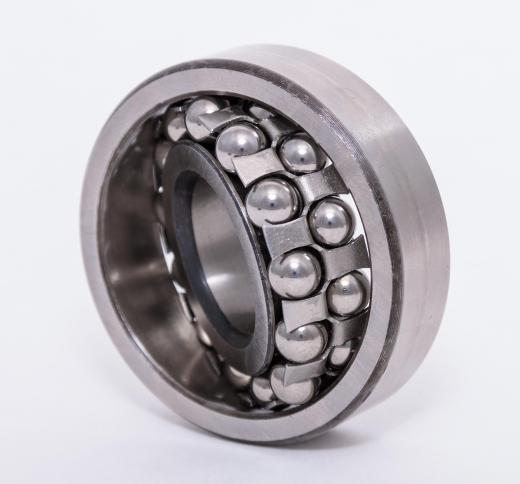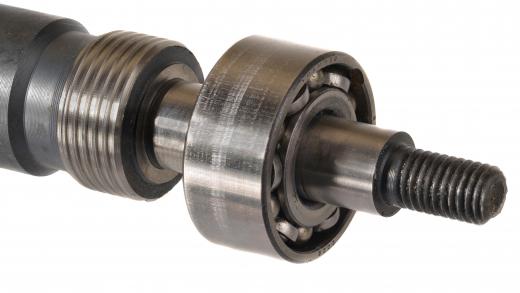Ball bearings, also known as anti-friction bearings, are small metallic or ceramic spheres used to reduce friction between shafts and axles in a number of applications. They are often used in a series to absorb the weight placed on a moving part, or in individual cages to reduce friction in axle assemblies. Most are manufactured to meet very exacting standards of roundness, since any deformation can cause the moving parts to fail unexpectedly.
The concept of ball bearings can be traced all the way back to the Roman Empire, but many sources credit Leonardo da Vinci with the first practical designs. It wasn't until 1791, however, when an Welsh carriage maker and inventor named Philip Vaughan patented the first axle assembly to use them. Previous carriage axles would eventually wear out from the effects of friction, but Vaughan's use of ball bearings eliminated the direct contact between the drive shaft and axle.

Following their early use in drive shafts, factory engineers found other applications in the manufacturing arena. Individual parts could be moved easily over ramps equipped with these bearings. Motor-driven machines became more efficient as they reduced friction between parts. Unlike other types of bearings, ball bearings allow for both rotary and axial movement, which added versatility to machine design.

One of the most common examples of ball bearings in action is the roller skate. Four wheels are attached to two axles on the bottom of a boot. A closer inspection of these wheels reveals a collection of small metal balls that surround the axle. As the skater places his or her full weight on the wheels, each ball absorbs the load temporarily. As the skater pushes forward, they roll in a track around the axle. Because the ball bearings are perfectly round and smooth, there is very little friction generated between them. They allow the skater to move in a straight line with little resistance.

Manufacturing ball bearings is surprisingly similar to forming balls of dough. A supply of metal wire approximately the same diameter as the bearings is placed in a machine with two plates designed as hemispheres. When the two halves are brought together forcefully, a rough metal ball is formed. The problem is, some additional metal shards called flashing still remain. The balls are then placed in another machine that removes the flashing to create a perfect state of roundness.

This second machine consists of two grooved plates, one with an open notch to receive the ball bearings. As this machine fills with unfinished balls, the upper grooved plate begins to twist in different directions over the immovable bottom plate. This action is similar to a cook using his or her hands to form balls of dough. The first run through this machine removes the flashing and helps the bearings become fairly uniform in size.

A second run through the same machine adds a lubricating liquid and abrasives to the mix. The ball bearings are ground down to a precise size by the action of the abrasives. Once the balls have reached an acceptable size and uniformity, a third run uses a polishing agent to give them a friction-reducing shine. All of the bearings are given one final inspection to check for imperfections before they are approved for use in other applications.

